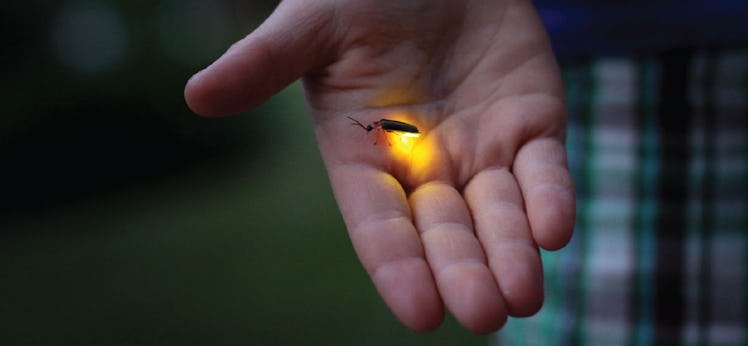How To Teach Your Kids About Bugs And Turn Your Backyard Into An Insect Exploratorium
Sorry to bug you.

For more advice on fun stuff to do with your kids, from ridiculously overqualified experts, check out the rest of our 940 Weekends.
Bugs are typically blood-sucking, sting-inducing, disease-spreading vermin that you kill with extreme prejudice. But they’re also integral to maintaining our fragile ecosystem. It’s a real Sophie’s Choice out there in the wild.
RELATED: ‘Bug Hunt’ Is a Scavenger Game That Teaches Kids About Nature
Kids just happened to be fascinated by things that are gross and tiny — like them! This is why Dr. John Guyton, professor of biochemistry at Mississippi State University and Chair of the Entomological Society of America, is the director of Arthropod Adventure, a summer camp with bugs. As you would expect of a guy whose idea of summer camp fun involves chasing bugs, Guyton wants your kid to appreciate the wonders of the insect world, but there’s a practical angle to all this: Contemporary entomology is mostly wrapped up in “mosquito-borne viruses and agricultural pests,” so nurturing your kid’s casual interest in creepy crawlies might turn them into a scientist who stems mosquito-born diseases or revolutionizes the ways farmers protect crops from pests.
ALSO: Best Insect Repellents for Kids & Adults
Even if they decide not to pursue a degree in entomology — or a career in extermination — looking at all these arthropods can be a fun, cheap way to explore the outdoors with your kid. Here’s how to bug out.
Know Your Insects
Like most things in life, “you have to know what you’re playing with,” says Guyton. Before your kid touches an interesting bug with their hands, or mouth, be sure you know what you’re getting into. Dr. Guyton recommends The Field Guide To Insects And Spiders Of North America, as it has “the most up to date classification data out there.” It specifies which bugs sting, bite, or just taunt you about your weight. Some of the more common and safer insects to gather are millipedes, cockroaches, and the unholy-looking stick insect.
Additionally, many states make their 4-H entomology manual available for free online, so you know what species you’re dealing with on a local level. These are kid-oriented entry-level guides to the wild world of insects, and will help your budding scientist get off to a running start on insect identification. Here’s Oregon’s bugs, which, weirdly, contains not a single mention of hipsters.
Go Log Rollin’
Ren and Stimpy were right: Logs are a fun toy for the whole family. Go turn over a few pieces of fallen wood next to a pond or creek bank. Odds are you will find a black beetle commonly known as the bess bug skittering around.
“These beetles are probably the best entry insect for a young person with their father to experiment with,” says Guyton. “They live in families in the logs and break down the wood. Chip away some of the wood on the bottom of the log — that’s what they eat. Keep them together in a plastic box. As long as you keep that wood moist, you’ll keep the beetles happy.” If only the Beatles could have been so easily placated.
Draw Out Some Termites
You might also try your luck with the house-destroying termite. “Pick up 10 or 20 and observe them for a little while,” Guyton says. Termites are blind, so they navigate the world by following scent trails. Most blue pen ink contains a chemical that mimics that pheromone trail. With the right pen, you could draw a line on paper and force termites to follow it. If you draw a circle, “we call that the ‘termite circus,” he says. To be fair, it’s kind of a lousy circus.
DIY Bug Net
Here’s what you need to look at bugs: A magnifying glass, an identification book, a jar to keep some of your more interesting finds, and a stick so you can replicate their natural habitat.
Dr. Guyton also says get the net — but save your singles. For a homemade version, just bend a coat hanger around a 5-gallon bucket to make a circular shape for the ring. Attach a bag to that. Attach stick to that coat-hanger and bag. Don’t worry, no bug is going to call you out on your net’s aesthetics.
Beyond The Backyard
Once your kid grows tired of flipping over woodpiles, get them involved in a 4-H entomology program. If you live near Mississippi, Dr. Guyton recommends his own bug camp, “It’s the oldest residential bug camp in the world,” he says. “It’s intergenerational as well; a lot of parents participate in bug camp with their children. Being an intergenerational camp gives us some unique opportunities because younger campers get to show older campers — parents, teachers, museum curators — how to do things they’ve learned in previous years.” Papa Roach, meet Papaw Roach.
This article was originally published on